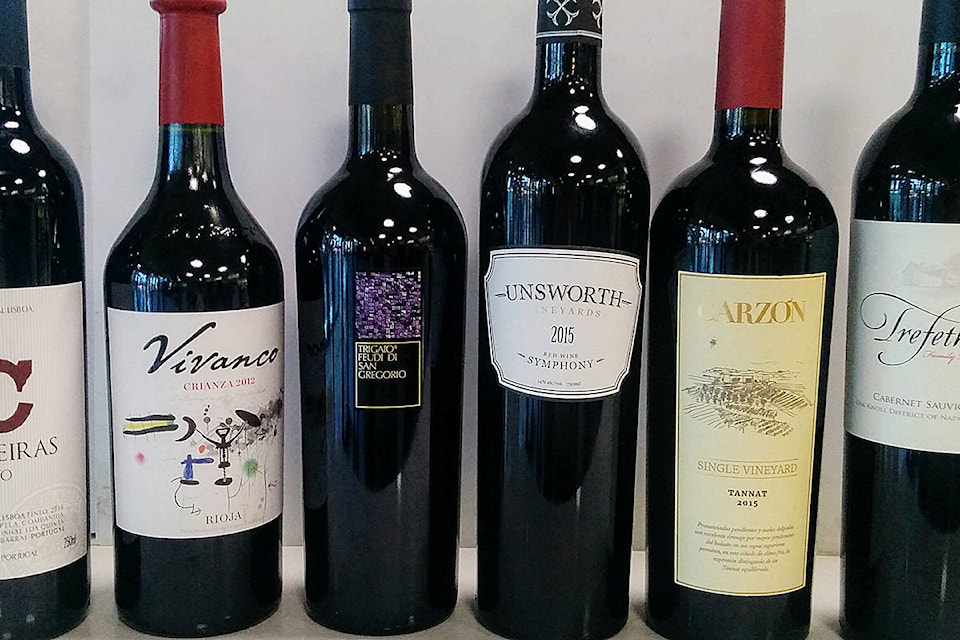Italian wine is an ever-evolving phenomenon. Look at the continuing explosion of Proseccos!
Locally, in towns and villages up and down the Italian peninsula, traditional varieties and blends dominate the cafe scene – Sangiovese, Trebbiano, Chianti, Pinot Grigio, Valpolicella. Internationally, old classics like Amarone, Barolo and Brunello get more attention than affordable Chiantis and Valpolicellas.
In progressing order of regulatory control, the Italian wine alphabet includes Vino da Tavola (VdT), Indicazione Geografica (IGT), Denominazione di Origine Controllata (DOC), Denominazione di Origine Controllata e Garantita (DOCG).
With one eye on the international market, Italian winemakers are using modern techniques with traditional grapes and producing more fruit-forward wines. At the same time, they continue to plant international vines and blend these non-traditional grapes into their wines.
Once considered a clone of Trebbiano Toscano, Trebbiano d’Abruzzo is now thought to be related to the southern Italian white grape Bombino Bianco.
Billing itself as “The biggest ‘Boutique Winery in Italy’ the Farnese Group is currently producing more that 13 million bottles a year as it moves to rebrand all of its wines as Fantini. Fantini Farnese Trebbiano d’Abruzzo DOC (636381) $12.79 is a weighty white with a textured medley of lemon apple and melon aromas and flavours and a twist of wet chalk in the finish.
Wines that fall outside the DOC guidelines typically use IGT - Indicazione Geografica Tipica - often including international varieties not used in DOC wines. For reds, the typical Veronese grapes are Corvina, Sangiovese, Merlot, Cabernet Sauvignon, Cabernet Franc and Pinot Nero.
A juicy mouthful of cherry berry flavours, Folonari Senso Rosso Veronese IGT (138891) $13.99 is made of primarily indigenous, traditional Corvina and adopted Merlot grapes, both cultivated in the province of Verona. Adding a portion of partially dried grapes – the appassimento technique – gives this ‘dry’ red a rich and sweetly spicy finish. Great value!
Introduced into North America by importer Anthony Terlato in the 1970s, Pinot Grigio soon became the most popular Italian white wine. A flood of wines of varying quality followed but Terlato’s initial offering from Santa Margherita still dominates the market.
Crisp notes of ripe apple, lemon, grapefruit and an underlying sprinkling of crushed almond and anise have helped Santa Margherita Valdadige Pinot Grigio (106450) $15.99 stand out from the crowd of competing Italian white wines for 50 years - even at its regular price of $19.99! Bone-dry, this bright white is underpinned by a lean, chalky minerality.
Gallura is a region on the island of Sardinia known for its relatively infertile and barren granite rocks. Towards the northeast, there are extensive scrubby areas covered with vineyards. Vignetta Zanatta specializes in whites made from Vermentino and reds made from Cannonau di Sardegna – a grape known as Garnacha in Spain and Grenache in France.
Sicilian wines are deeper, darker and heartier than comparable wines from elsewhere. Vigneti Zanatta Cannonau di Sardegna Salana DOC (253112) $18.99 offers up aromas of ripe plums and sage over earthy flavours of blackberries and prunes with peppery undertones of liquorice and molasses.
Centred on Sangiovese, Tuscany’s Chianti wine zone was officially designated by Cosimo Medici III in the early 18th Century and the wine’s defining character was originally ordained by Barone Ricasoli in the late 19th century.
Piazzano Chianti DOCG (523536) $19.29 is a blend of 80 per cent Sangiovese with Canaiolo, Colorino and other traditional local grape varieties. Plum and leathery berry aromas give way to cherry, berry and blackcurrant flavours. Touches of tree-bark and tarry molasses add a dark edge to the finish.
The western area of Tuscany that overlooks the Tyrrhenian Sea and surrounds the ancient village of Bolgheri became famous in the late 20th century for producing Super Tuscan wines from international grape varieties. In 1994, the Bolgheri DOC was created for red wines from international grape varieties. The classification has since become internationally famous and indisputably respected for its wines.
A blend of 60 per cent Merlot, 20 per cent Cabernet Sauvignon, 15 per cent Cabernet Franc and 5 per cent Petit Verdot, the 2015 Campo al Mare Bolgheri Rosso DOC (118547) $33.99 could easily be mistaken for a fine French Bordeaux. Sun-dried red and black berry aromas and flavours are framed by notes of vanilla, caramel, figs and fresh cut tobacco. A serious and elegant red!
Reach WineWise by emailing douglas_sloan@yahoo.com
